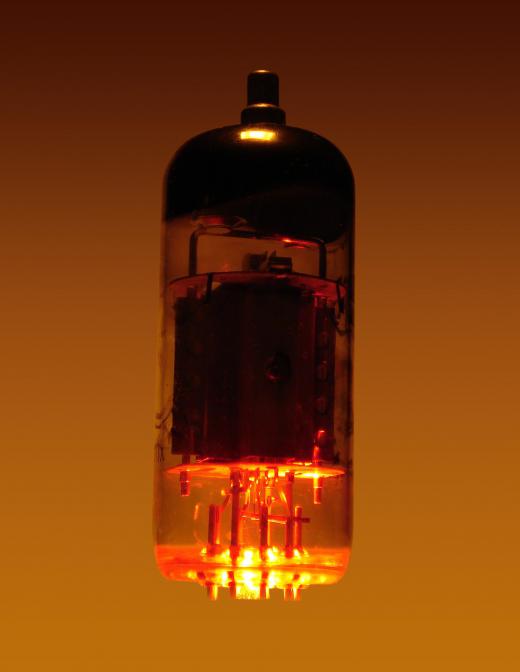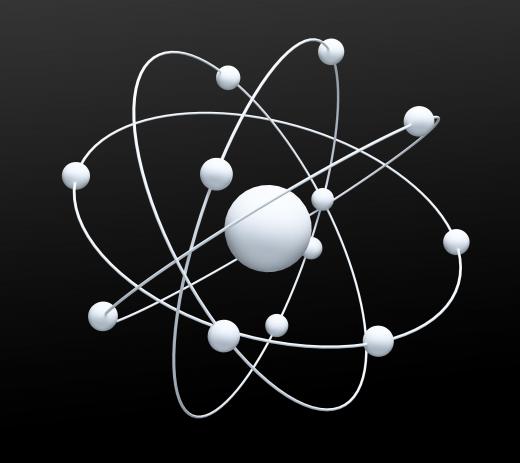How does a Particle Accelerator Work?
 Michael Anissimov
Michael Anissimov
A particle accelerator is a physics device which uses electric fields to accelerate charged particles to immense speeds, sometimes significant fractions of the speed of light. Common particles that can be found within particle accelerators include protons and electrons, the building blocks of the atom.
A particle accelerator is used to observe the behavior of small particles at high velocities and energies, as well as for more everyday purposes such as generating a specific sort of electromagnetic radiation. Particle accelerators are often used to smash particles against each other at very high speeds, revealing their more fundamental components. The x-ray generator and television set are both common examples of particle accelerators, with the same basic design as their larger cousins used in high-energy physics experiments. A particle accelerator falls into one of two categories: circular or linear.

In a circular particle accelerator, particles are accelerated in a continuous circular path. The advantage of this arrangement is that the particle can be directed in a circle many times, saving hardware. The downside is that particles in circular accelerators emit electromagnetic radiation, called synchrotron radiation. Because their momentum is constantly encouraging them to fly out on a trajectory tangential to the circle, energy must continuously be expended to keep them on the circular path, meaning circular particle accelerators are less efficient. In large accelerators, synchrotron radiation is so intense that the whole accelerator must be buried underground to maintain safety standards. The Fermilab particle accelerator in Illinois has a circular path of 4 miles (6.43 km).

Linear accelerators fire particles in a straight line at a fixed target. The cathode ray tube in your television is a low-energy particle accelerator, which fires photons in the visible light range at a glass plate, the screen. The stream of photons is constantly being redirected to fill the screen with pixels. This redirection occurs fast enough that we perceive the alternating stream of photons as a continuous image.

High-energy linear accelerators, or linacs, are used in physics applications. A series of plates alternatively attracts and repels the charged particles moving through them, pulling particles forward when they have not yet passed it, and pushing them away after they have. In this manner, alternating electric fields can be used to accelerate streams of particles to very high velocities and energies. Physicists use these accelerators to simulate exotic conditions, such as those in the center of stars or near the beginning of the universe. The "particle zoo" described by the Standard Model of particle physics was uncovered incrementally in particle accelerator experiments. The largest linear particle accelerator is the Stanford Linear Accelerator with a length of 2 miles (3.2 km).
AS FEATURED ON:
AS FEATURED ON:













Discussion Comments
Why do the particles emit the radiation in the first place? Because of the energy expanded or the acceleration?
To anon25823: Fortunately many people do care. It might not be an exciting subject for everybody, but it is important in the development of humankind.
With an attitude of "who cares", we might still be living in caves.
its harmless. just like a magnetic field.
electromagnetic radiation does not harm human tissue, its Ionising radiation such as X-rays, gamma rays, high energy electrons, etc. that harm human tissue. they do this by giving up their energy in human tissue, this energy breaks down water (which is abundant in human tissue) to from free radicals (free electrons, these free electrons are the ones that do harm to human tissue. that's why cancer is treated with ionising radiation. Please note: Ionising radiation can cause cancer!
is it possible to create enough energy by colliding particles continuously to create a small worm hole?
Does anybody really care?????!!!!!!
Apparently the largest particle accelerator is located in Switzerland. This machine, the Large Hadron Collider (LHC) should reproduce extremely high energies.
The collider should be able to accelerate the beams of subatomic particles, where they will move in opposite directions and then get smashed together. The speed at which this should happen is almost the speed of light.
whaz an electromagnetic radiation?? what does it do?? advantages or disvantages???? any harm??
how does electromagnetic radiation harm human bodies???
Post your comments